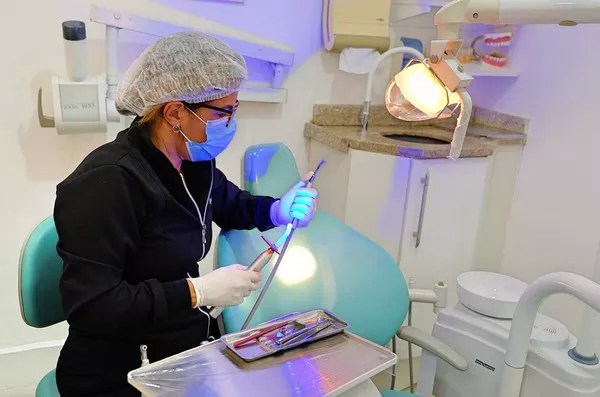Wisdom teeth removal is a common dental procedure, yet it often raises concerns about whether the wisdom teeth removed dangerous and potential risks. This comprehensive article will provide an in-depth look at the procedure, common risks and complications, anesthesia options, post-operative care, alternatives and preventive measures, expert opinions, and patient testimonials. By understanding all aspects of wisdom teeth removal, patients can make informed decisions about their oral health.
Explanation of the Procedure
What Wisdom Teeth Removal Entails
Wisdom teeth, or third molars, are the last set of teeth to erupt, usually between the ages of 17 and 25. Due to limited space in the jaw, these teeth often become impacted, meaning they cannot fully emerge from the gums. This impaction can lead to various dental issues, including pain, infection, and damage to adjacent teeth.
Why Wisdom Teeth Removal Is Necessary
Wisdom teeth removal is often recommended for the following reasons:
Impaction: Impacted wisdom teeth can cause pain, swelling, and infection. They may also damage neighboring teeth or bone structures.
Crowding: Eruption of wisdom teeth can lead to crowding of existing teeth, disrupting the alignment achieved through orthodontic treatments.
Cysts or Tumors: In rare cases, cysts or tumors can form around impacted wisdom teeth, leading to more serious health concerns.
The procedure itself involves the following steps:
Consultation and Examination: A dentist or oral surgeon evaluates the patient’s dental health using X-rays to determine the position of the wisdom teeth and the necessity of their removal.
Anesthesia Administration: Depending on the complexity of the extraction and the patient’s comfort level, local anesthesia, sedation, or general anesthesia is administered.
Tooth Extraction: The oral surgeon makes an incision in the gum tissue to expose the tooth and bone. If necessary, the tooth is divided into sections for easier removal.
Closure: The incision is closed with stitches, and gauze is placed over the extraction site to control bleeding.
Common Risks and Complications
While wisdom teeth removal is generally safe, it carries some risks and potential complications. Understanding these risks helps in making informed decisions and preparing for the procedure.
Infection
Post-operative infection is one of the more common complications. Signs of infection include:
- Swelling
- Redness
- Pus discharge
- Fever
- Persistent pain
Infections can be minimized by following post-operative care instructions, taking prescribed antibiotics, and maintaining good oral hygiene.
Dry Socket
Dry socket occurs when the blood clot at the extraction site dislodges or dissolves before the wound heals, exposing underlying bone and nerves. Symptoms of dry socket include severe pain, bad breath, and an unpleasant taste in the mouth. The risk of dry socket is higher in the lower jaw and can be reduced by avoiding smoking, drinking through straws, and following care instructions meticulously.
Nerve Damage
Nerve damage, though rare, can occur during wisdom teeth removal, particularly if the lower wisdom teeth are positioned close to the mandibular nerve. This can result in temporary or, in rare cases, permanent numbness, tingling, or loss of sensation in the tongue, lips, or chin.
Bleeding and Swelling
Some bleeding and swelling are expected after the procedure. Persistent or excessive bleeding, however, should be addressed immediately. Swelling usually peaks 48-72 hours post-surgery and can be managed with ice packs and prescribed medication.
Sinus Issues
In cases where upper wisdom teeth are removed, there is a small risk of sinus complications due to their proximity to the sinus cavity. Symptoms such as nasal discharge or sinus pain should be reported to the dentist or oral surgeon.
See Also: What Your Mouth Looks Like After Wisdom Teeth Removal?
Anesthesia Options
Choosing the right type of anesthesia is crucial for patient comfort and the success of the procedure. The options include:
Local Anesthesia
Local anesthesia numbs the specific area where the tooth will be removed. It allows the patient to remain fully conscious while eliminating pain in the targeted area. This option is typically used for simple extractions.
Sedation Anesthesia
Sedation anesthesia involves administering medication intravenously to help the patient relax while remaining semi-conscious. This type of anesthesia is suitable for patients with moderate anxiety or those undergoing more complex extractions.
General Anesthesia
General anesthesia renders the patient completely unconscious and unaware of the procedure. It is used for extensive surgical procedures or for patients with high anxiety levels. General anesthesia carries higher risks, including respiratory complications and prolonged recovery time.
Associated Risks
Each type of anesthesia has its own risks, including allergic reactions, respiratory issues, and cardiovascular complications. The choice of anesthesia should be discussed thoroughly with the oral surgeon, considering the patient’s medical history and the complexity of the procedure.
Post-Operative Care
Proper post-operative care is essential for minimizing complications and ensuring a smooth recovery. Here are key aspects of care following wisdom teeth removal:
Immediate Care
Rest: Resting for the first 24 hours post-surgery is crucial. Avoid strenuous activities that can increase blood pressure and bleeding.
Ice Packs: Applying ice packs to the cheeks can help reduce swelling and discomfort.
Medications: Take prescribed pain relievers and antibiotics as directed to manage pain and prevent infection.
Oral Hygiene
Mouth Rinsing: Gently rinse the mouth with warm salt water to keep the surgical site clean. Avoid vigorous rinsing or spitting to prevent dislodging the blood clot.
Brushing and Flossing: Continue with regular brushing and flossing, avoiding the extraction site to prevent irritation.
Dietary Guidelines
Soft Foods: Stick to soft foods and liquids for the first few days, such as soups, yogurt, and smoothies. Avoid hot, spicy, and crunchy foods that can irritate the surgical site.
Hydration: Stay hydrated, but avoid using straws as the sucking motion can dislodge the blood clot and cause dry socket.
Activity Restrictions
Smoking and Alcohol: Refrain from smoking and consuming alcohol for at least 72 hours post-surgery as they can interfere with healing and increase the risk of complications.
Physical Activity: Avoid heavy lifting and intense physical activities for a few days to prevent increased bleeding and swelling.
Alternatives and Preventive Measures
Alternatives to Extraction
In certain cases, alternative treatments may be considered:
Monitoring: If wisdom teeth are not causing symptoms and are unlikely to cause future problems, regular monitoring with X-rays may be recommended.
Partial Removal: In some instances, only a portion of the tooth may be removed to alleviate symptoms while preserving some tooth structure.
Preventive Measures
Early Evaluation: Regular dental check-ups, especially during the late teens and early twenties, can help identify potential issues with wisdom teeth early on.
Proper Oral Hygiene: Maintaining good oral hygiene can prevent infections and other complications related to impacted wisdom teeth.
Conclusion
Wisdom teeth removal, while generally safe, is a form of oral surgery that carries some risks and potential complications. Understanding the procedure, anesthesia options, and post-operative care is crucial for minimizing risks and ensuring a successful recovery. By consulting with dental professionals and considering individual needs, patients can make informed decisions about their oral health. Additionally, patient testimonials provide valuable insights into the experiences of others who have undergone the procedure, offering reassurance and practical advice.
You Might Be Interested In































